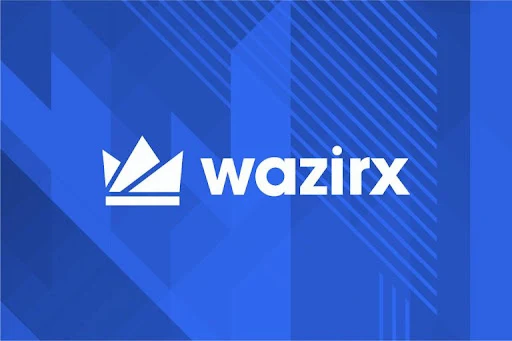WazirX Users Still Waiting: Singapore Court Grants More Time for Crypto Recovery Plan
Introduction
Embattled Indian crypto exchange WazirX has received a much-needed lifeline after a Singapore court granted an extension, allowing the exchange to present further arguments for its proposed restructuring plan. This development is significant for the 6.6 million users of WazirX who have been unable to access their funds since the platform suffered a devastating $234.9 million cryptocurrency hack in July 2024. The court's decision also temporarily shields WazirX from creditor actions, giving it a vital window to push forward with its recovery efforts.
Here’s a comprehensive update on the latest court decision, its implications for WazirX users, and the future of the exchange’s crypto recovery plan.
Singapore Court Grants WazirX a Reprieve
On Tuesday, the Singapore High Court allowed WazirX to submit additional arguments in its bid to restructure operations, reversing its earlier decision in early June to reject the exchange’s Scheme of Arrangement. The original rejection had dealt a significant blow to the company’s restructuring ambitions, raising concerns over whether affected users would ever recover their lost funds.
WazirX, operated by its Singapore-based parent company Zettai, filed for legal protection after halting trading activities due to the hack. The company has since been navigating complex legal and regulatory hurdles in a bid to reorganize and reimburse users through a recovery token model.
What Does the Court Extension Mean?
The court’s latest ruling extends the legal moratorium originally granted on June 6, which protects WazirX from legal action by creditors. This breathing space is crucial, as it gives the company more time to defend the feasibility of its recovery and restructuring strategy.
A WazirX spokesperson expressed optimism, stating that the court's willingness to hear further arguments is a "positive step" and reiterated the exchange's commitment to a lawful and user-focused resolution.
The Impact on 6.6 Million WazirX Users
The extension is a mixed bag for the millions of WazirX users. On one hand, it keeps hope alive for recovery. On the other, it signals more delays. Many users have been locked out of their funds for nearly a year, and the path to compensation remains uncertain.
The exchange’s plan revolves around the issuance of recovery tokens—on-chain digital IOUs that represent user balances at the time of the breach. These tokens are not instant cash-outs but symbolic claims that may be redeemed later, subject to various factors such as exchange performance, token valuation, and legal approvals.
Why Panama Is the New Focus
Amid growing pressure from Singapore’s central bank, which has asked crypto service providers to stop offering digital asset services to overseas clients by June 30, Zettai is relocating its operations to Panama.
WazirX’s crypto services will now be managed under a newly incorporated entity named Zensui Corporation, established on March 10. This Panama-based company will also handle the issuance of recovery tokens and oversee crypto-related operations going forward.
According to internal documents shared with users, the transition to Zensui is expected to conclude within a few business days. However, this move adds regulatory and logistical uncertainty to the already fragile situation.
What Are WazirX Recovery Tokens?
The proposed WazirX recovery tokens serve as on-chain IOUs—digital representations of unpaid account balances. These tokens are intended to give users a way to track and reclaim their funds once the platform stabilizes.
WazirX has promised that these tokens will represent 75% to 80% of users' account balances from before the hack, with additional potential for appreciation if the platform recovers successfully.
While over 93% of creditors approved the restructuring proposal in April, the delay in legal approval means that actual recovery remains a future promise, not a present reality.
Legal Experts Warn of Prolonged Recovery
Legal professionals and industry observers remain cautious. According to Web3 lawyer Dhrupad Das, WazirX’s restructuring path is riddled with uncertainty. The extended court process, the speculative nature of recovery tokens, and the planned launch of a decentralized exchange all contribute to a long and unclear timeline for resolution.
Moreover, the lingering dispute with Binance, WazirX's former partner, and the sudden jurisdictional shift to Panama may raise more compliance challenges in the future.
What's Next for WazirX?
In the short term, WazirX will focus on preparing new legal submissions to support its restructuring plan. If the Singapore court finds the updated arguments convincing, it may finally approve the Scheme of Arrangement, allowing the company to proceed with the distribution of recovery tokens and the official handover of operations to Zensui Corporation.
In parallel, WazirX must also address technical infrastructure, build community trust, and ensure legal compliance across new jurisdictions. For users, this means staying informed and vigilant as the situation continues to evolve.
Final Thoughts
WazirX’s court extension offers a glimmer of hope to users and investors still reeling from one of India’s largest crypto exchange hacks. While the decision provides the company with critical time to restructure, the road to fund recovery remains long and uncertain.
The fate of WazirX now lies in how convincingly it can demonstrate the viability of its restructuring plan to the Singapore High Court. For its millions of users, the promise of recovery tokens and decentralized trading remains on the horizon—awaiting legal clarity, regulatory alignment, and market confidence.

Comments
Post a Comment